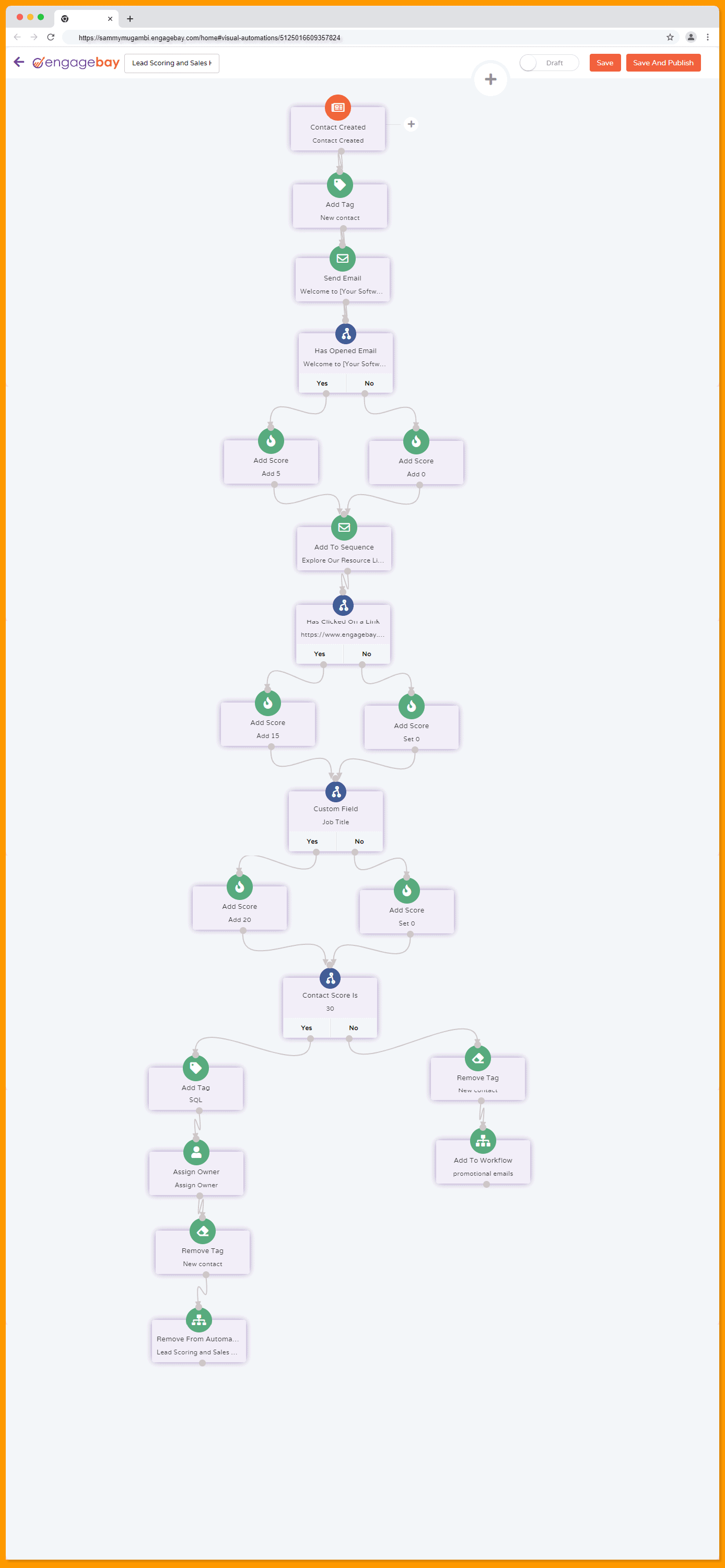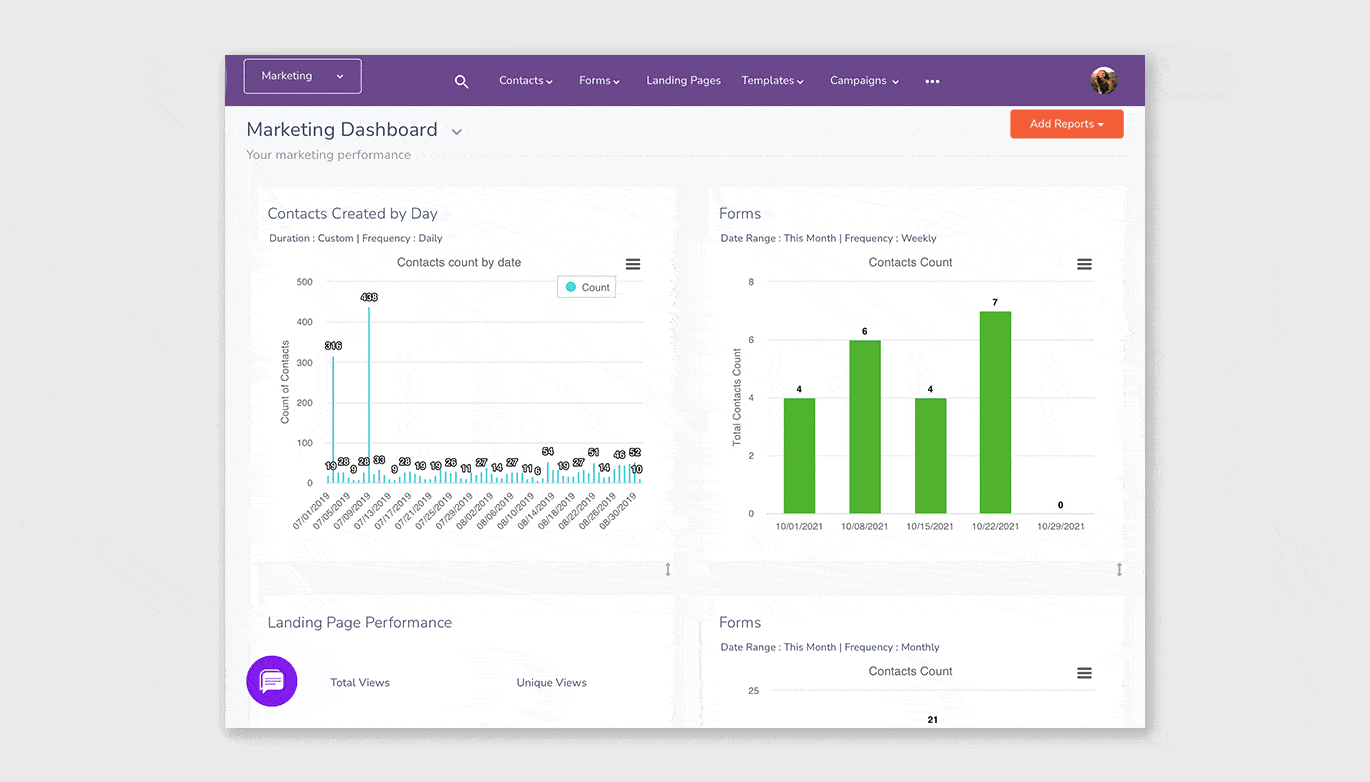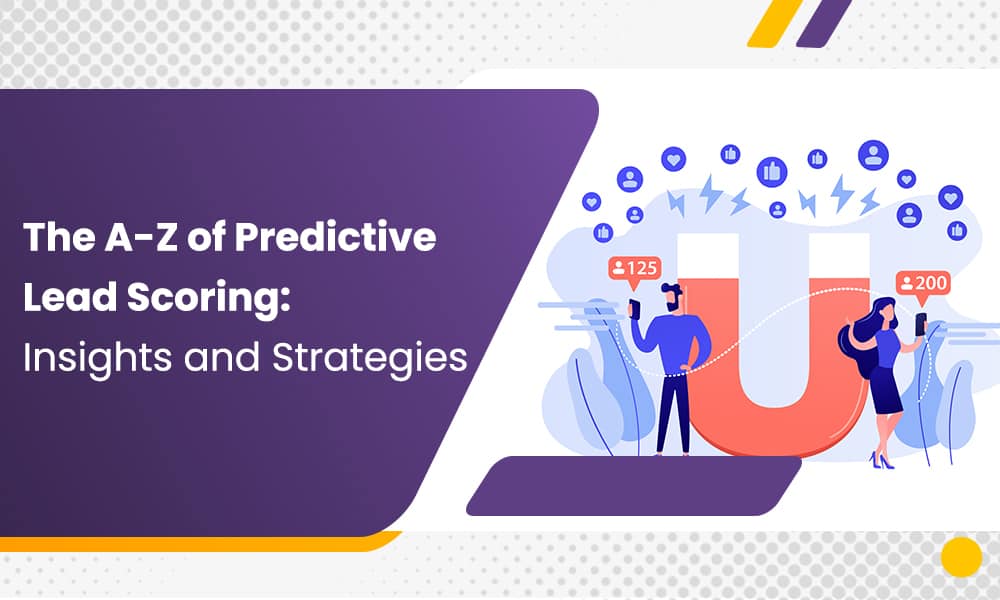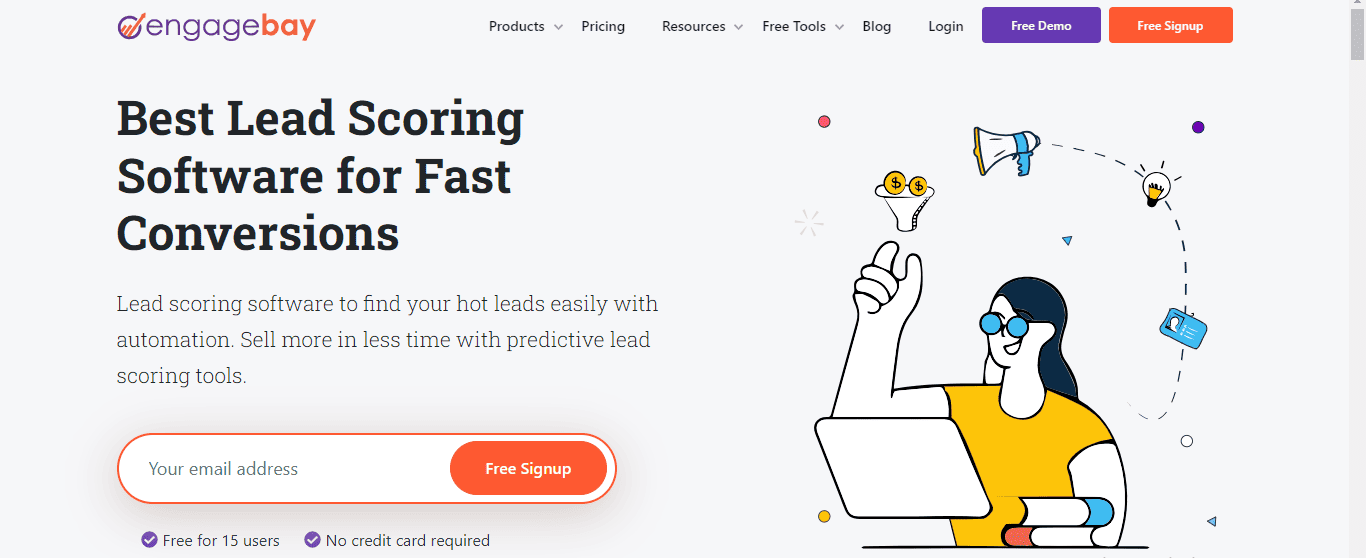Lead generation is a hot topic for good reasons. Still, most companies don’t maximize the full potential of each lead. Because, let’s face it, how does your sales team know which lead will eventually become a loyal customer? Does ‘predictive lead scoring’ ring a bell?
Research shows that companies get at least 1,877 leads per month. But, even if they get that number, it is sad that only 20% of leads convert or become paying customers.
This statistic shows that finding the perfect customer feels like the fabled quest for Prince Charming amidst a pond full of frogs. Each frog in the pool represents a potential lead. Kissing each frog, hoping to find the one that turns into your loyal customer, will be counterintuitive and unproductive.
Predictive lead scoring is the magical hint that helps you quickly spot the lead more likely to become your Prince Charming without kissing every frog in the pond. It saves you time and effort, guiding you straight to your ‘happily ever after’—your most valuable customers.
Within the number of businesses using lead scoring, research has shown that up to 47% of marketers have experienced improvement due to the incorporation of predictive lead scoring in their marketing strategy.
In this article, we cover:
- Predictive lead scoring and how it works
- The difference between traditional lead scoring and predictive lead scoring
- The benefits and implementation of predictive lead scoring
- Some potential drawbacks of predictive lead scoring
Table of Contents
Predictive Lead Scoring 101
Predictive lead scoring is used in sales and marketing to evaluate and rank potential customers, or leads, based on their likelihood to convert into actual customers.
Predictive lead scoring operates by machine learning and analysis. It uses implicit (internal data) and explicit (external) data to evaluate leads and rank them based on their likelihood of becoming customers.
This ranking is based on data like demographics, job titles, interaction with pages (how many times a customer interacted with your pricing page, visited your website, and other online behavior your sales team may be unable to capture manually), and third-party data like industry trends.
Based on your defined ideal customer and lead scoring model, predictive lead scoring uses these data to score and rank your leads. So, your sales team prioritizes hot leads (leads with higher conversion potential), leading to a higher lead-to-customer conversion rate.
Of course, you won’t abandon leads with lower scores or not engage with them entirely, but lead scoring helps you categorize, segment, and prioritize your lead nurturing efforts.
According to a report,
- 75% of businesses have experienced an increase in lead conversion rate with lead scoring
- Lead scoring helps your sales team reduce the time spent on unqualified leads and improve conversion rates by up to 50%
- Lead scoring helps your sales team to prioritize leads with the highest potential for conversion
Predictive Lead Scoring: How Does it Work?
It uses machine learning to predict each lead’s future behavior based on historical past behavior. The artificial intelligence behind predictive lead scoring pulls the patterns in data (gathers data across the web and companies) and comes up with an ideal customer profile.
The process involved four steps, as follows.
Step 1: Integration
The first step is to sign up for a predictive lead scoring software or automation tool that allows you to integrate into an existing marketing tech stack. EngageBay, HubSpot, and Zoho CRM are ideal predictive lead scoring tools to incorporate into your marketing tech stack for precise lead tracking and customer behavior analysis.
Step 2: Identification
This step, usually after integration, can be a little tasking. You must identify the data points and target attributes you want to measure in every visitor that visits your website. As mentioned earlier, the attribute you want to measure can be company-specific. However, on a general note, you can track metrics like web engagement, email interaction, past purchases, and other online behavior.
Step 3: Qualification
After identifying the attributes you want to measure, you need to specify a point allocated to visitors when they show the related attributes. With the defined point, you can use the machine learning algorithm in the scoring process to create a model. The model will show you the point at which a customer will be qualified and counted as an actual paying customer.
Step 4: Prioritization
After the assigned numerical values or score is given to the lead, your sales team works on the analyzed data, targeting the leads more likely to convert.
Read also: A Guide To Lead Scoring For Your 2024 Sales Goals
Traditional vs Predictive Lead Scoring Models: Any Difference?
There are two main types of lead-scoring models–traditional (manual) lead-scoring and predictive lead-scoring. Let’s take a cursory look at each with examples.
Traditional lead scoring model
This lead-scoring model relies on human effort. Here, sales teams use their historical judgment and instinct to prioritize leads based on predefined criteria. They focus on data that can point them toward an opportunity for conversion.
To understand this better, let us create this scenario. Company A is a SaaS brand that uses the traditional lead-scoring model to evaluate and rank leads. Their predefined criteria and scoring model are as follows.
Predefined criteria
- Demographics: Age, country, job title
- Engagement: Visits the website more than twice a week
- Lead source: Comes from a webinar or referral program
- Email interaction: Opened at least three promotional emails
Scoring
Based on the defined criteria, the following scores are assigned
- 80: Leads who meet all the requirements
- 50-70: Leads who meet some criteria
- Below 50: A lead who only meets a few criteria
These overall scores are obtained by assigning specific scores to each predefined criterion based on their weightings or how important they are perceived to be in relation to customer-client conversion.
In this instance, let us say a lead, Brenda Jack, who works in a tech company, has opened two promotional emails in the past, visited the website weekly, and attended a webinar organized by Company A. Based on the predefined criteria and scoring model, Brenda will be assigned a score of 70 because she met some criteria.

While the traditional lead scoring model has its potential, it’s limited. Your sales team can be letting customers slip through the cracks if all they base their scores on is demographics, job titles, and sign-up of emails. The inefficiency of traditional lead scoring is based on the core fact that we are humans.
Humans will err and change behavior over time. In recent times, companies have shifted to maximize the use of predictive lead scoring. Over 500 million businesses have migrated to the predictive lead scoring system in 2023 alone.
Predictive lead scoring
It uses advanced predictive analytics and machine learning to rank leads based on their propensity to convert to customers. This way, larger data sets are analyzed, and patterns correlating with successful conversions are identified.
The predictive lead score method takes scoring leads a step further, helping you maximize your leads and see what customers to focus outbound communication on and who to carry further on a buyer’s journey.
Let’s create another scenario for better understanding. Company B makes use of the predictive lead scoring model to evaluate leads. Their scoring process looks like this:
Criteria
- Broad data analysis: Utilizes machine learning to analyze robust data from multiple sources
- Behavioral patterns: Considers not just demographics but also user behavior, social media interactions, time spent on the website, interactions with specific content, etc.
- External data: Incorporates external sources, industry trends, and purchasing intent signals
Scoring
Here, the scoring model is dynamic, based on leads’ evolving behavior and machine learning algorithms. In this instance, a potential customer who regularly engages with your business product pages follows your social media accounts, has purchased from a similar company in the past, and shows purchase signal intent can get a score of 75 based on real-time behavioral data.
With the traditional method, the lead’s score might not accurately depict their propensity to convert because it relies on fixed criteria. Meanwhile, predictive scoring captures the leads evolving behavior, providing a more accurate prediction of their likelihood to convert.
The significant difference between predictive and traditional lead scoring is that one process relies on human effort, and the other is automated. Predictive lead scoring uses a dynamic approach to keep up with trends and shifts in the market and assign scores to leads automatically. In contrast, traditional lead scoring uses predefined criteria to score leads manually.
Other factors make both scoring techniques different, and here’s a tabular view of some of them.
| Criteria | Traditional lead scoring | Predictive lead scoring |
| Scoring criteria | Fixed (predefined) criteria | Real-time updates and advanced algorithm |
| Process | Manual | Automated |
| Data source | Limited data source | Broader data sets, including internal and external data sources |
| Scoring model | Scores are subjective based on human judgment | Scores are based on machine learning and multiple data points |
| Accuracy | Prone to human error and less accurate due to assumptions and reliance on past experiences | It relies on automation for the process, reducing the chances of human error, and it’s more accurate due to the analysis of more comprehensive data sets. |
| Flexibility | Less flexible | Can adjust in real-time |
Read also: Lead Scoring Model to Close More Deals
Traditional and Predictive Lead Scoring: A Formidable Combination
As we have seen earlier, predictive and traditional lead scoring differ. Predictive lead scoring has many advantages, like taking away manual efforts and identifying ideal customers. However, it requires large data sets that may not be available for new businesses and startups.
Also, the ideal customer profile created using predictive lead scoring becomes faulty and flawed when your business goals or priorities change. This can create inefficiencies and errors in lead evaluation and scoring.
The solution is combining traditional lead scoring and predictive lead scoring. This approach allows you to maximize large data sets and machine learning to identify high-value traits in leads and prospects while still allowing you to change and customize your ideal customer profile or have several scoring systems for a more customized approach.
This way, you eliminate the stress of manual efforts while still aligning with shifting business needs to maintain accurate lead assessments.
Read also: Maximize Your Sales: Top 12 Lead Scoring Tools Reviewed
How to Implement Predictive Lead Scoring
Now that you’ve understood predictive lead scoring and how it works, you may wonder how to incorporate it into your business.
First, you need to select a tool. EngageBay’s lead scoring software combines predictive lead scoring and traditional scoring models to give you the flexibility to score leads based on real-time insights and selected criteria.
It allows you to automate the scoring process and intuitively parse through multiple data points and the predefined scoring criteria to identify your best leads automatically. Additionally, you can customize and predefine the scoring points.
EngageBay’s CRM system also serves as a centralized data repository. It analyzes several data sources to identify leads with the highest conversion potentials and categorize them for more precise marketing. You can also easily integrate EngageBay’s lead scoring software with other CRM or marketing software.
When a lead reaches a particular score, you can trigger relevant notifications, segment email lists, or pass the leads automatically to the sales team. The sales team will be able to establish appropriate information that counts due to EngageBay’s 360-degree contact view that puts the entire history of the leads’ interaction to becoming sales-qualified.
Read also: Lead Scoring Strategy to Discover & Prioritize High-Value Prospects
What are the Steps to Developing the Best Predictive Lead Scoring Model?
Here are steps to build a lead scoring model that works.
1. Define your goal
The first step is to set a clear goal on what your business wants to achieve with predictive lead scoring. Do you want to reduce your sales cycle or identify upsell opportunities? Or do you want to improve your lead nurturing efforts and forecast revenue generation?
2. Map your ideal customer profile
To create your ideal customer profile. You need to identify traits and engagement patterns from high-value customers and, based on this data, outline the criteria that signify an ideal customer. Use these refined criteria as essential features in your predictive model, assigning weights according to their perceived value.
3. Data collection
Gather diverse data sources, including CRM data, website analytics, email engagement metrics, social media interactions, etc.
4. Split data
Data gathered should be divided into training and testing sets. The training set trains the model, and the testing set evaluates the performance of the model. Here, ensure the marketing team adjusts parameters to optimize 100% performance. Adjusting parameters entails using the correct data source in alignment with your business needs.
5. Define segment criteria
With data obtained from the predictive lead scoring tool, go a step further to implement it into your email marketing efforts for more results by creating segments using your scoring models.
Define segment-specific criteria and assign scores to these criteria, then segment leads based on scores. This way, you can send specific messages and offers that resonate with each segment, nurturing disengaged leads and maximizing conversions among highly engaged segments.
Read also: Lead Nurturing: A Complete Guide with Strategies
How Do You Gather Accurate Customer Data for Predictive Lead Scoring?
Predictive lead scoring relies heavily on data for accurate results. These data come from various sources. They might come from internal sources, third-party providers, or a combination. Machine learning algorithms then analyze relevant data points to evaluate leads.

Some data points to collect include:
- Demographic data: Get primary customer data like age, location, job titles, and marital status.
- Purchase data: How often customers buy their buying behavior.
- Engagement data: their interactions with your site and behavior on your webpage.
- Campaign data: Your business’s past marketing campaigns could foretell your customers’ behavior.
CRM systems play a crucial role in data collection for predictive lead scoring by aggregating and organizing valuable customer data. It makes sense to integrate your predictive lead scoring tool with CRM software. Better still, go for a scoring system with a built-in CRM.
Read also: What is a Lead? Overcoming Obstacles in Sales and Marketing Alignment
Benefits of Predictive Lead Scoring
Companies of all sizes use predictive lead scoring to gain a competitive edge and focus their resources on important leads. Here are some of the benefits that come with adding it to your sales and marketing team asset.
1. Reduced customer acquisition costs
Predictive lead scoring optimizes resource allocation by identifying high-potential leads, allowing focused efforts on prospects more likely to convert. This approach increases your marketing team’s efficiency, shortens sales cycles, and maximizes return on investment, significantly reducing customer acquisition costs.
2. More accurate results
The probability of error with manual effort is higher than with automation. Predictive lead scoring eliminates the room for human error by employing advanced algorithms that eliminate human bias from the scoring process.
3. Drive revenue growth through informed decision-making
Inaccurate targeting of leads can cause friction between your revenue goals and results. Predictive lead scoring is a plus for sales teams because it enables you to make informed decisions. By prioritizing leads more likely to convert, your marketing and sales team can prioritize leads with higher conversion potential.
This helps you to optimize your sales pipelines, reduce sales cycles, and ultimately increase the rate of closing deals.
Read also: 11 Lead Scoring Best Practices to Get Better Sales Results
4. Improve customer experience through targeted messaging
For every business, customer experience is important. Customer reviews can positively or negatively affect your business’s influx of new customers. Predictive lead scoring helps you tailor your marketing communication for the various stages of your customer journey. So leads receive the right message at the right time, improving customer experience.
5. Continuous improvement through data-driven insights
The information obtained from predictive lead scoring not only enhances the performance of your scoring process but also helps your business grow. By gaining insights into customer experiences, market dynamics, and your competitors’ activities, you can refine your workflow and optimize your sales approach for sustainable growth.
Read also: A Beginner’s Guide to Lead Funnels: How to 2X Your Sales
Predictive Lead Scoring: The ‘Ugly’ Side of the Story
There are two sides to every coin; the same goes for predictive lead scoring. Here are some potential disadvantages of implementing predictive lead scoring into your lead generation and nurturing efforts.
1. Extensive data pool
One of the drawbacks of predictive lead scoring is the need for a large set of data for segmentation. This can become burdensome to the sales team, as opposed to the simple but tedious format of traditional lead scoring.
2. Requires technical understanding
Your sales team’s job is to increase sales and see the business thrive, but integrating technical stuff like predictive lead scoring may be way over their heads and needs to be clarified.
While predictive lead scoring may have these drawbacks, one cannot under-emphasize the ease, growth, and organization it brings into business.
Read also: The Lead Generation Process — How Does It Work?
Conclusion
If you made it to this point, congratulations! Now that you’ve seen the benefits of predictive lead scoring, you’ll agree that it’s not a nice but a must-have if you want to increase your lead-to-customer conversion rate and overall business revenue.
EngageBay’s predictive lead-scoring software is an excellent addition to your marketing stack, ensuring you don’t kiss every frog in the pool to find your prince charming.
Additionally, it integrates seamlessly with CRM software, and its 360 contact view makes it easy for marketing teams to send messages that resonate with qualified leads, increasing your chances of more conversions. All you have to do is sign up for free and get started.

